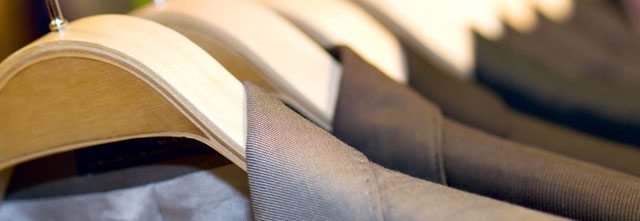Gillette’s new “Masters of Style” ad, featuring the fashionably attired Adrian Brody, Gael Garcia Bernal and Andre 3000, comes at a time when more U.S. men are taking their personal style into account.
Total U.S. men’s wear sales jumped more than 4% to $55,723,500 for the 12 months ending in December 2011, according to the NPD Group. MarketLine Business Information expects global men’s wear industry to exceed $402 billion in 2014, representing a 14% expansion in five years.
Belk’s David Zant, executive vice-president and GMM of men’s, home and children’s, says the retailer’s outlook remains positive.
“The men’s apparel areas have performed well over the past two years. On a year over year basis, men’s has trended better than women’s.”
[quote]IBM Global Business expects men’s apparel sales to increase nearly 8.3% in the first quarter of this year, compared to a 2.4% increase in women’s.
On average, men have been clothes shopping about twice per month in store and once a month online, according to the Cotton Incorporated Lifestyle MonitorTM Survey. And they spend about 90 minutes shopping in either setting.
IBISWorld’s Nikoleta Panteva, senior analyst, says men’s tailored clothing stores like Men’s Wearhouse and Jos. A. Bank were especially sensitive to the economic recession. But a change is slowly taking place.
“Sinking consumer sentiment, brought about by skyrocketing unemployment and a slowdown in personal disposable income growth limited downstream demand for men’s apparel,” Panteva says. “As a result, IBISWorld estimates revenue [at men’s tailored clothing stores] has fallen at an average annual rate of 4.2% since 2007. A turnaround in sentiment and high-end purchases [at men’s specialty stores], however, is expected to push revenue up 0.5% through 2012.”
The Doneger Group’s Doug Arvanites, men’s merchandise manager, says men’s wear tends to take a hit before women’s when the economy is tumultuous.
“But men’s also rebounds before women’s going into recovery,” Arvanites says, adding that younger consumers are helping drive the upturn. “A lot of young men today were raised in single-parent households. Their moms didn’t have time to do their shopping and so they did it on their own.”
Indeed, younger men ages 13 to 35 love or enjoy shopping significantly more than males ages 35 to 70 (35% versus 25%), according to the Monitor survey. Younger male consumers also spend more on apparel each month. Those ages 25 to 34 spend $62, followed by the 13 to 24 year olds, who spend $52. Men 35 to 55 spend $49 on average, while those 56 to 70 spend $41 per month.
Belk’s Zant says the store is focused on its key growth areas: executing and strategic initiatives.
“If we execute well, our business responds,” Zant says. “Our best performing areas continue to be the better men’s sportswear collection vendors, and also our dressier categories.”
The economy had many men taking their appearance more seriously, whether it was to find a job, keep their job, or get promoted. This helped drive the dressier apparel to see increases. IBM suggests this interest in looking more professional will help men’s apparel sales to rise nearly 8.3% in the first quarter, far outpacing other retail categories.
The shift toward a slimmer silhouette has also been enticing men to shop, Arvanites says. In 2011, he says the message was heard loudest in the dress shirt, tailored clothing and collections categories, and gave some men a reason to replace “more than a normal amount” of their wardrobes.
More than 9 out of 10 men say fit (95%), comfort (94%), and quality (91%) are important to their apparel purchases, Monitor data show.
Tailored clothing and sportswear saw an improvement, while casual bottoms and denim are expected to continue to be strong.
“Casual slacks and jeans account for about 14% of industry revenue,” Panteva says. “This segment has been growing in recent years, as some employers have relaxed the formal dress code during work hours. Additionally, designer denim, which carries a price premium and has become increasingly popular in the U.S. over the past five years, has boosted this segment’s share of revenue.”
Lower prices on premium denim — which generally range from $150 to $200, rather than $300 or more — reflect the new economy, with most of that business in the $150 to $200 range, Arvanites says. Newness here is in color, and for men that means shades of brown, grays and neutralized reds. But he says denim might be slower this year as men re-stock their casual pants.
“The cotton bottom should be on the shopping list for 2012,” Arvanites says. “The fit story means the new chino pant is what guys will want. Slimmer fitting chino pants in traditional and spring fashion colors are definitely something people will want to buy.”
Innovation is expected to continue driving sales in men’s under garments, which saw a 7% increase in 2011 to almost $3.3 billion, according to the NPD Group, a sentiment echoed by Belk’s Zant.
“We believe we need to continue to show newness, which creates interest and motivates our customer to shop.”
